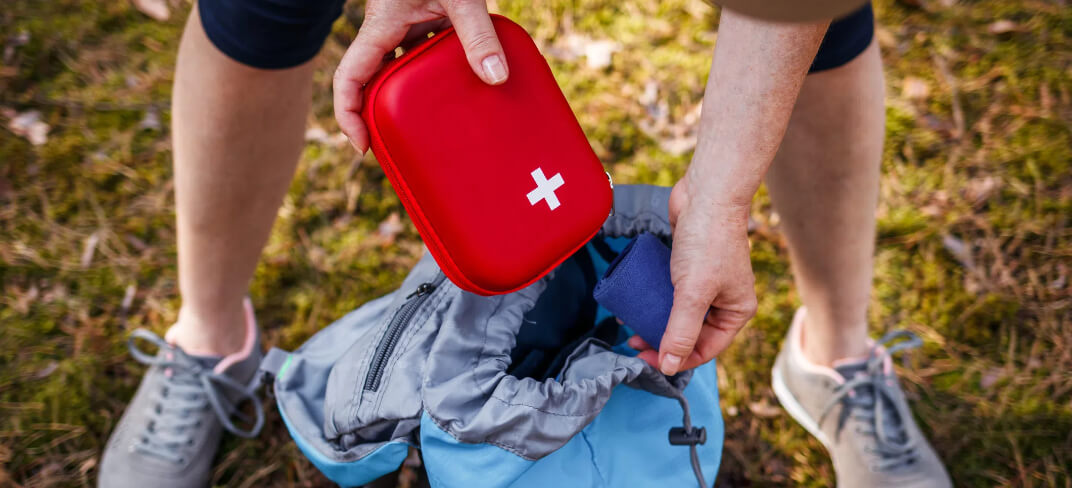How to Prepare a Travel First-Aid Kit

When organizing a trip, managing health emergencies may not be the first thing on your mind. However, if someone in your group gets hurt or ill during your holiday, having a first aid kit available could be extremely useful.
A travel first-aid kit should include essential items that you may need in a medical emergency. You can choose to purchase a ready-made one or assemble a customized one before departure.
Tips to Consider When Building a Travel First-Aid Kit
When preparing your travel first aid kit, it is essential to take some important aspects into consideration:
- The dimensions of the kit. It must be spacious enough to hold all the necessary items, but compact enough to be easily transportable. A soft bag is ideal, as it can adapt to the contents flexibly.
- Specific medical needs. Evaluate your medical needs and those of those traveling with you. If someone suffers from a specific condition, it is crucial to include the necessary medications. For example, insulin for those with diabetes, an epinephrine auto-injector (such as the Epipen) for those with allergies, or an inhaler for those with asthma. Consult your doctor for more information on medications to take.
- The travel destination. Your destination affects which items are included in the kit. If you go to the beach, don't forget your sunscreen and after-sun gel for sunburn. If your destination is an area at risk of specific diseases, you may need medications such as antimalarials and appropriate vaccinations. Check the specific needs of the place you will visit.
- The duration of the trip. The length of your trip may determine how many medications and other items you need to bring. If you or someone you are traveling with takes prescription medications, make sure you have a sufficient supply for the duration of your trip. If necessary, request an additional prescription from your doctor before departure.
Finally, it is advisable to find out about the possibility of taking out travel insurance or check whether your health insurance covers any problems that may arise during the trip. Remember to bring your health and insurance card with you.
What to Put in a Travel First-Aid Kit
The items to include in a first aid kit depend a lot on the aspects listed above. They can include:
Medicine
- Allergy medications, such as antihistamines and epinephrine auto-injectors.
- Aloe vera gel for sunburn.
- Anti-itch medicine for bug bites or or stinging plants such as poison ivy and nettles.
- Antimalarial medicines (depending on destination).
- Diabetes testing supplies and insulin, if needed.
- If packing insulin, be sure to include a cool pack because insulin needs to stay chilled.
- If you are experiencing low blood sugar levels, keep a small can of a carbonated, sugary drink or fruit juice handy.
- Artificial tears and/or eye drops.
- Inhalers/asthma medication, if needed.
- Painkillers such as aspirin, ibuprofen.
- Medicines subject to medical prescription, in the presence of specific diseases.
- Medicines for the respiratory system, such as cough sprays and nasal decongestants.
- Stomach medicines, such as antacids, motion sickness tablets, laxatives and diarrhea medicines.
First-aid items
- Antibacterial or antifungal ointments.
- Antibacterial wipes.
- Antiseptic wound cleanser.
- Patches of various sizes and shapes.
- Gauzes.
- Hand cleaner containing at least 60% alcohol.
- Hydrocortisone cream.
- Instant cold compress.
- Medical tape.
- Self-adhesive bandage for more serious injuries (such as a sprained ankle or knee).
Other items
- Insect repellent.
- Digital thermometer.
- Disposable latex gloves.
- Scissors.
- Sunscreen (SPF 30 or higher).
- Tweezers.
Not all items listed may be useful or suitable for your trip, the first aid kit must be customized to your specific needs. However, it is essential to consider possible health emergencies before leaving and bring with you what you may need to deal with them.